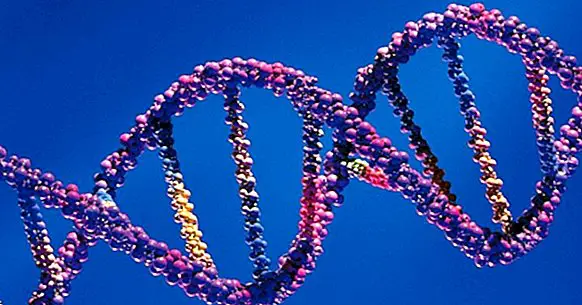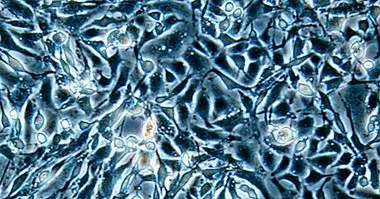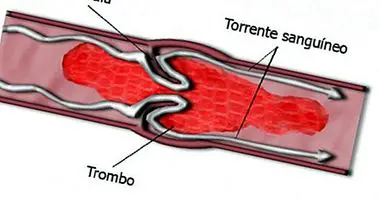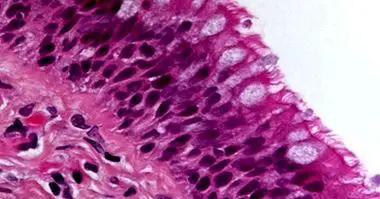Top 10 disorders and genetic diseases
The health of the people is a main factor to enjoy mental well-being and happiness. However, there are diseases that affect us, some more serious and others less, and that have a strong impact on our lives. Some of these diseases are caused by viruses, others by our bad habits and others by genetic causes.
In this article we have made a list of the main genetic diseases and disorders .
The most frequent genetic diseases
Some diseases have a genetic origin and are hereditary. Next we show you the main ones.
1. Huntington's Korea
Huntington's disease is a genetic and incurable disease characterized by the degeneration of neurons and cells of the central nervous system and causes different physical, cognitive and emotional symptoms. Since there is no cure, it can end up causing the death of the individual, usually after 10 to 25 years.
It is an autosomal dominant disorder, which means that children have a 50% chance of developing it and transmitting it to their descendants. The treatment focuses on limiting the progression of the disease, and although it may occasionally comment in childhood, its onset usually occurs between 30 and 40 years. Its symptoms include uncontrolled movements, difficulty swallowing, trouble walking, memory loss and speech difficulties. Death can occur from drowning, pneumonia and heart failure.
- Related article: "Huntington's Korea: causes, symptoms, phases and treatment"
2. Cystic fibrosis
Cystic fibrosis is on this list because it is one of the most frequent hereditary diseases and what happens because of the lack of a protein whose mission is to balance the chloride in the body. Among its symptoms, which can range from mild to severe, include: difficulties in breathing, problems of digestion and reproduction. For a child to develop the disease, both parents must be carriers. Then, there is a probability of 1 between 4 for it to suffer.
3. Down syndrome
Down syndrome, also called trisomy 21, affects approximately 1 in 800 to 1,000 newborns . It is a condition that is characterized because the person is born with an extra chromosome. Chromosomes contain hundreds or even thousands of genes, which carry the information that determines the traits and characteristics of the person.
This disorder causes delays in the way a person develops, mentally, although it also manifests with other physical symptoms, because those affected have particular facial features, decreased muscle tone, heart and digestive system defects.
4. Muscular Dystrophy of Duchenne
The symptoms of this disease usually have its beginning before 6 years . It is a genetic disorder and a type of muscular dystrophy characterized by progressive muscle degeneration and weakness, which begins in the legs and then gradually progresses to the upper body, leaving the person in a chair. Its cause is dystrophin deficiency, a protein that helps keep muscle cells intact.
The disease mainly affects children, but in rare cases it can affect girls. Until recently, the life expectancy of these people was very low, they did not surpass adolescence. Nowadays, within their limitations, they can study careers, work, marry and have children.
5. Fragile X syndrome
Fragile X syndrome or Martin-Bell syndrome is the second cause of mental retardation due to genetic reasons , which is linked to the X chromosome. The symptoms produced by this syndrome can affect different areas, especially behavior and cognition, and cause metabolic alterations. It is more common in men, although it can affect women as well.
- You can delve into this syndrome in our article: "Fragile X syndrome: causes, symptoms and treatment"
6. Sickle Cell Anemia (ACF)
This disease affects red blood cells, which deform, altering its functionality and, therefore, to its success when transporting oxygen. It usually causes acute episodes of pain (abdominal pain, in the chest and bones), which is called a sickle cell crisis. The body itself also destroys these cells, causing anemia.
7. Muscular Dystrophy of Becker
Another type of muscular dystrophy of genetic origin and with degenerative consequences that affect the voluntary muscles . It receives this name by the first person who described it, Dr. Peter Emil Becker, in the 50s. As in the Muscular Dystrophy of
Duchenne, this disease causes fatigue, weakening of muscles, etc. However, the muscular weakness of the upper body is more severe in the disease and the weakening of the lower part of the body is progressively slower. People with this condition do not usually need a wheelchair until they are about 25 years old.
8. Celiac disease
This condition, of genetic origin, affects the digestive system of the affected person . It is estimated that 1% of the population suffers from this disease, which causes the immune system of people with celiac disease to react aggressively when gluten circulates through the digestive tract, a protein present in cereals. This disease should not be confused with gluten intolerance, because despite being related, they are not the same. Gluten intolerance, in fact, is not a disease; however, some people claim to feel better if they do not consume this protein.
9. Thalassemias
Thalassemias are a group of inherited blood disorders in which hemoglobin , the oxygen carrier molecule, presents a malformation when synthesized by red blood cells. The most common is beta-thalassemia is the most common, and the least, alpha-thalassemia.
It causes anemia and, therefore, fatigue, shortness of breath, swelling of the arm, pain in bones and weak bones. People with this condition have little appetite, dark urine and jaundice (a yellow discoloration of the skin or eyes, jaundice is a sign of liver dysfunction).
10. Edwards syndrome
This hereditary disease is also called Trisomy 18 , and occurs by a complete additional copy of the chromosome in pair 18. Affected individuals usually have a slow growth before birth (intrauterine growth retardation) and a low birth weight, in addition to heart defects and abnormalities of other organs that are develop before birth The facial features are characterized by a small jaw and mouth, and those affected tend to have a closed fist.



















